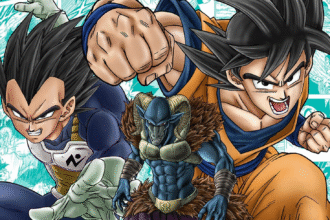Naruto, created by Masashi Kishimoto, has captivated fans around the world with its dynamic characters, intricate plots, and distinctive art style. For aspiring artists, capturing the essence of Naruto can be a fulfilling challenge. This step-by-step guide provides essential tips and techniques to help you master drawing Naruto and develop your own artistic skills.
1. Understand the Basics of anime Art
Study the Style
Start by familiarizing yourself with the anime art style. Naruto features exaggerated facial expressions, vibrant colors, and dynamic action scenes. Pay close attention to proportions, particularly the large eyes and small mouths typical in anime.
Familiarize Yourself with Character Designs
Study the character designs in Naruto. Note how different characters embody unique traits—Naruto‘s spiky hair, Sasuke’s brooding expression, and Sakura’s vibrant pink locks. Understanding these details will help you recreate their essence in your drawings.
2. Gather Your Materials
Choose Your Tools
Select the right tools based on your preferred medium. Pencils, fine liners, and color pencils are excellent for sketching. Digital drawing tablets can also be beneficial if you prefer working digitally. Consider investing in quality paper or a sketchbook designed for your medium.
Tools for Effects
Kishimoto’s illustrations often feature dynamic action lines and shading. To recreate this, have brush pens, markers, or even software that allows layering effects when drawing digitally.
3. Start with Character Sketches
Basic Shapes
Begin by sketching fundamental shapes to outline the characters’ proportions. Use circles for heads and ovals for bodies, keeping in mind their overall anatomy.
Refining the Sketch
As you refine your sketch, focus on the defining features of the characters. For Naruto, emphasize his signature whisker marks, while for Sasuke, capture his intense gaze and spiky hairstyle.
4. Master Facial Expressions
Eyes are Key
anime characters often convey emotions through eye expressions. Spend time practicing various expressions—happiness, anger, sadness—specific to the characters. This skill will enhance your storytelling through art.
Mouth and Eyebrows
Facial features like the mouth and eyebrows greatly affect expressions. Experiment with different shapes to portray a range of feelings in your characters.
5. Explore Dynamic Poses
Action Poses
Naruto is known for its intense fight scenes and exciting character movements. Practice drawing dynamic poses by studying images from the manga or anime. Focus on angles, foreshortening, and action lines to convey motion.
Character Interaction
Consider how characters interact with their environment and each other. Practice drawing scenes that capture their relationships and emotional depth, such as Sasuke and Naruto‘s rivalry and friendship.
6. Implement Inking and Coloring Techniques
Linework
Once your sketch is complete, carefully outline your drawing with black ink or a fine-liner. Create varying line weights to add depth and emphasis to your work.
Color Theory
Understanding color theory is essential for creating vibrant art. Analyze the color palettes used in Naruto, and practice blending and shading techniques to bring your characters to life.
7. Backgrounds and Setting
Create Immersive Environments
Draw backgrounds that make your characters feel 3D in their world. Study the architecture of the Hidden Leaf Village and the landscapes featured in the series.
Interaction with Backgrounds
Ensure your characters interact with their environment, which will help add realism. For example, if Naruto is standing in the Village, illustrate the buildings or trees around him.
8. Regular Practice and Critique
Consistent Practice
To master drawing Naruto, consistency is key. Set aside time each week for practice. Try different techniques, styles, and characters to grow your skills.
Seek Feedback
Share your work with fellow artists and seek constructive criticism. Online platforms or local art communities can provide valuable insights and motivation.
9. Develop Your Unique Style
Incorporate Personal Touches
While learning to draw Naruto, don’t forget to infuse your unique style into your work. Experiment with different techniques and elements that resonate with you, whether it’s a specific color palette or stylistic flair.
Create Original Characters
Once you feel confident in replicating existing characters, challenge yourself to develop your own ninja designs. Capture what you love about Naruto while adding your creative twist.
Conclusion
Mastering the art of Naruto takes dedication, practice, and a willingness to learn. By following this step-by-step guide, aspiring artists can build their skills and find personal expression within the world of this beloved series. Remember, every stroke brings you closer to molding your artistic identity—embrace the journey, and let your creativity shine!








